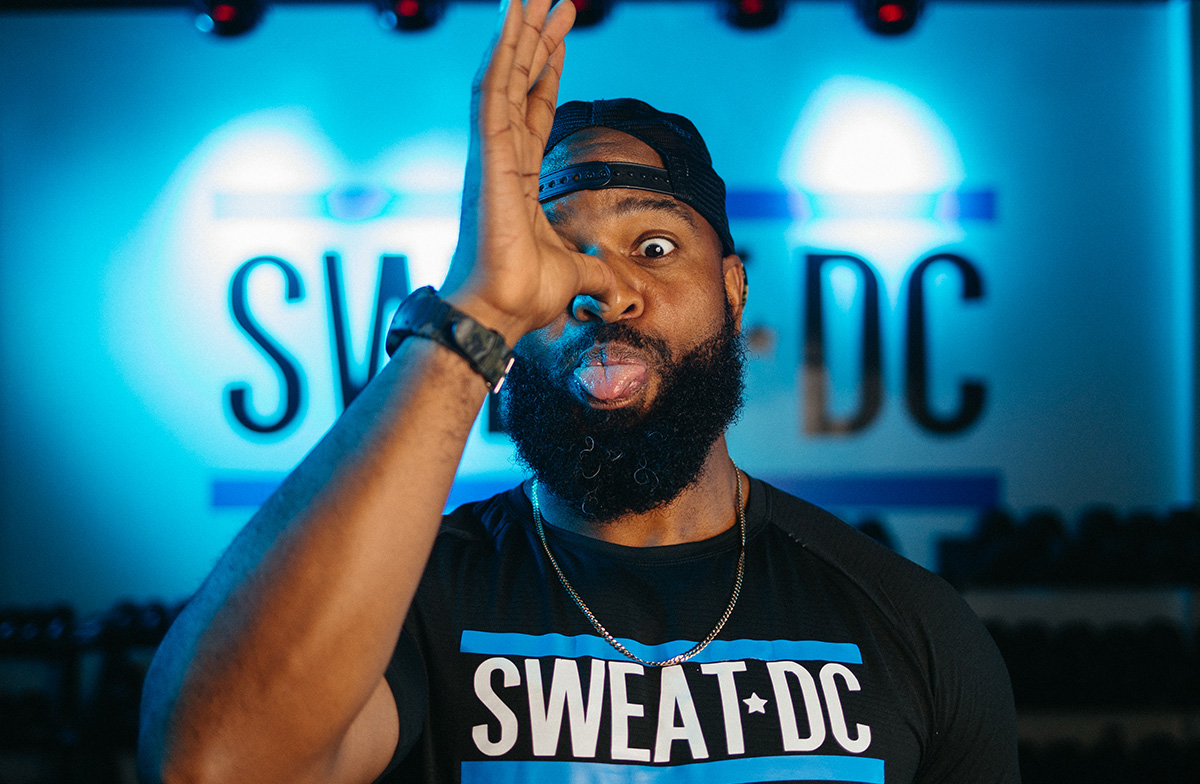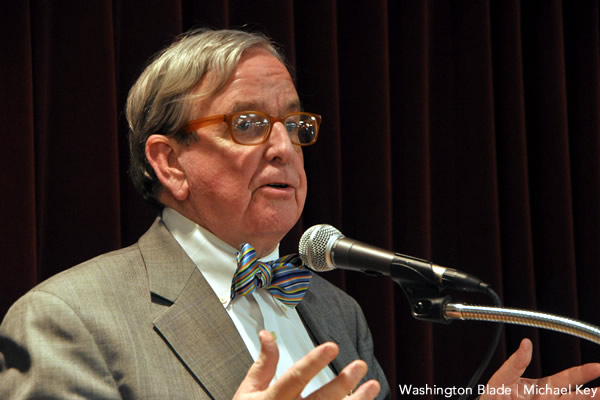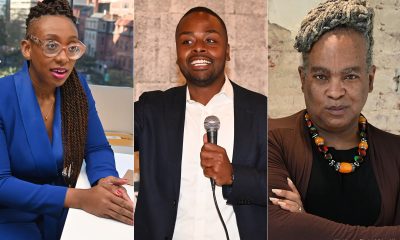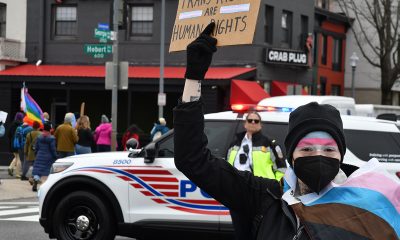Opinions
Jim Graham, a life well lived
A complicated man who made a difference

Jim Graham was born James McMillan Nielson Graham in Wishaw, Scotland, on Aug. 26, 1945. Surely his parents could never have envisioned the road their son’s life would take when they brought him from war ravaged Britain to America to settle in Michigan. Jim lived his life to the hilt in many ways. He was a brilliant man with a huge ego who at times made questionable decisions. He could be arrogant yet his life’s work did much good for many.
The Washington Post reported as a young man Jim was an anti-war activist who said, “It was obvious to anyone who was listening that the United States was planning to forcibly bring the Vietnamese people to their knees at whatever cost. He wore his hair in a ponytail and contemplated returning to Scotland and was relieved when he got a low draft number.” I can understand that sentiment having grown up at the same time living through the turbulent Vietnam War years also protesting the war and having a pony tail.
Jim earned his law degree from the University of Michigan and clerked for Supreme Court Justice Earl Warren. According to the Post, Warren “hired him to help him write his memoirs but the chief justice died before the project began.”
I first met Jim when I volunteered with Whitman-Walker Clinic in 1986. That was the first of many interactions with him over the years. When first meeting Jim it was clear the major turning point in his life was in 1981 when he became president of the board at WWC. The same year according to a history of the clinic posted on its website, “The Centers for Disease Control and Prevention’s weekly Morbidity and Mortality Report contains an account of five young gay men who had an unusual cluster of infections. This was the first medical report on what would come to be known as AIDS.”
From that time until he resigned from the clinic to begin his time on the Council of the District of Columbia Jim Graham’s name was inextricably associated with HIV/AIDS. Whitman-Walker began its life as a VD clinic for gay men, part of what then was known as the Washington Free Clinic. By the time AIDS began ravaging the gay community in the District of Columbia Jim had begun to build the clinic into an institution recognized for its work across the nation and around the world. In 1985, the clinic opened the first of what were to become numerous homes for people living with AIDS who were unable to find any other housing. Like so many projects Jim undertook eventually there were questions about how the homes were bought and sold. But when it came to the clinic Jim had a handpicked board and made many decisions on his own as he built the clinic to serve the community in the way he thought best. During his years at WWC Jim was an ever present presence in the community. He dedicated his life at the time to helping those who were suffering. He often told me about how many funerals he had attended saying after each one he would first feel a sense of despair but that would quickly turn into renewed energy to continue to make a difference for those still living. Those were the years when even young men would first turn to the obituary columns each morning to see if any of our friends had died. Jim spent countless hours raising money to build the clinic and keep up with the case load that kept growing. He wanted to see a cure for AIDS but his lasting contribution and fundraising efforts were dedicated to trying to make life better for those living with AIDS.
One of his proudest moments came in 1993 when he introduced Elizabeth Taylor at the dedication of the Elizabeth Taylor Medical Center at WWC. The center that Jim fought to build was able to offer more services to the clients of WWC including an eye care center, x-ray facilities, an expanded laboratory, a new dental facility and 12 examination rooms.
By 1998, Jim’s ego was demanding a bigger platform and he applied for the position of executive director of amfAR, the AIDS foundation founded by Elizabeth Taylor and Mathilde Krim, Ph.D. He traveled to California for final interviews with Elizabeth Taylor but in the end didn’t get the job. So he made what some at the time considered an ill-advised decision, to run against Ward 1 Council member Frank Smith. Jim won that race and was to spend the next 16 years on the Council until he was defeated in 2014 by Brianne Nadeau.
His years on the Council were spent fighting for the poor and underserved. While supporting gentrification of Columbia Heights and bringing new retail and new housing he never gave up his fight for more affordable housing and to keep the safety net of government programs for those in need. He was everywhere in his Ward driving his beige VW convertible.
Jim’s outsized personality sometimes got in his way and his arrogance could at times cloud some of the good things he did. There were many sides to Jim Graham as there often are to brilliant and driven people. When he left the Council he shocked many when in an interview with the Blade he said, “I’ve told people I’m in the adult entertainment industry.” Graham had organized and was promoting a male strip show for a club on Georgia Avenue, which he called ‘Rock Hard Sunday.’ He was to do that until his recent passing.
If you look at the totality of Jim’s life it is clear he was dedicated to helping others and did that in many different ways. He put his heart and soul into everything he did. He will be missed and he will be remembered fondly by the many he helped; and with gratitude by the families and friends of those he helped who are no longer with us. Jim, rest in peace, knowing you lived a good life.
Peter Rosenstein is a longtime LGBT rights and Democratic Party activist. He writes regularly for the Blade.
Opinions
Trump’s ‘American people derangement syndrome’
Voters must stop him before he destroys democracy

Trump, in a deranged, evil, post on X, accused Rob Reiner of suffering from “Trump derangement syndrome.” I guess that would apply to everyone who thinks Trump is an evil, dangerous, asshole who is trying to destroy our society as we know it. With that definition, I would surmise the felon himself suffers from “American people derangement syndrome,” because clearly, he thinks we are all evil, dumb, assholes, and a danger to him, and the fascists surrounding him.
His speech to the nation was called bellicose, by the New York Times. I would call it unhinged and vile. It was a plea to the populace, containing a pack of lies, to continue to believe his lies, and distortions. We all know the felon is full of shit when telling us prices have come down. We go shopping every week to feed ourselves and our families, even if he doesn’t. We have to pay heating and rent bills each month. We know since he became president nearly a year ago, all those costs have gone up. Talk to any honest person at a chamber of commerce in your area, and they will tell you small businesses are suffering. They will tell you the felon’s tariffs are hurting everyone. We know he is screwing the poor and middle class; trying to end SNAP benefits, and refusing to help with healthcare costs. All the while giving tax breaks to corporations, and the rich. People are not dumb Mr. Felon, and your lies are no longer resonating.
The evil, deranged, felon in the White House lives in a world where he can do favors for his friends in return for getting them to donate hundreds of millions for his follies. He is a grifter who hosts dinners for rich people to make money for his crypto business. He is said to have made more than $3 billon since his election. This while farmers are going broke, and losing their farms, because his tariffs screwed them. He is undermining vaccines and caused a measles epidemic in the United States. This a disease eradicated before he came into office. He ended grants to research cures for HIV/AIDS, Parkinson’s, Alzheimer’s, cancer, and an assortment of childhood diseases. He stopped research grants for mRNA vaccines. When we have the next pandemic, and it will come, that will result in millions of deaths, all on his head.
He is embarrassing the United States around the world. They watch him give unhinged speeches, raise and lower tariffs irrationally, screw our allies, and now trying to interfere in their elections. He is bombing fishing boats, claiming they are carrying drugs, with no proof at all. Then he releases from prison the man who brought more cocaine into the country than anyone else ever did. All this is what the lying, cheating, grifting, evil, heartless, felon in the White House, is doing to you, the good people of the United States, and the world. He sounds more unhinged every day while trying to blame everything on former President Biden and Democrats, who haven’t controlled the levers of government in nearly a year.
I know the results of the 2025 elections must scare him. They show him the majority no longer accept his BS. We will go into 2026, and the midterm elections, with our eyes wide open. He wants to be King and we don’t want kings in our country. He has what his chief of staff calls, “an alcoholic’s personality” “because he believes there’s nothing he can’t do.” She is right about that, but we will call him on it in the next election. We will say clearly, with our voices, and our votes, “no more, enough is enough.” We are taking back the country and will throw out anyone in office who still supports him.
We try and forgive those who voted for him, as long as they now recognize he lied to them, and is screwing them. Young people must understand they will suffer their whole lives because he is a climate denier. Latino and Hispanic voters, who believed he was going to support them, now see he wants to deport them. Farmers who once thought he supported them, until he screwed them. We must now all join together, and show the evil SOB in the White House, who is building his grand ballroom, taking planes, and other gifts, and pardoning the guilty; his time is coming to an end. Again, we will go into the voting booth, eyes wide open, and vote to stop him before he completely destroys our lives, our families, our democracy, and brings fascism to our country.
Peter Rosenstein is a longtime LGBTQ rights and Democratic Party activist.
Opinions
Using movement to boost your mental health during holidays
Sometimes the goal is simply steadiness

We’re told this is the season of Ho Ho Ho. Joy. Family. Home.
But let’s be honest. The holidays are stressful for almost everyone. Even in the best situations, this time of year comes with pressure. Expectations. Family dynamics. Financial stress. Comparison. The emotional labor of trying to make everything feel warm and magical while quietly holding a lot inside.
For some people, home is comfort. For others, it’s complicated. A place where old roles come back fast. Where you’re expected to be a version of yourself that no longer fits. Where love exists, but understanding feels incomplete.
And for many of us in the LGBTQ community, that stress can carry extra weight. Sitting at tables where parts of who you are feel debated instead of celebrated. Navigating politics and beliefs that don’t feel abstract, but personal. Deciding when to speak up, when to stay quiet, and when to just go refill your drink. Grief changes how the holidays land.
For me, the holidays have often been quiet. I’m deeply grateful for the family I still have and the support they’ve given me, and I also need to be real. I’ve been jealous. Jealous AF. Jealous that I can’t go home and hug my mother. Jealous that my dad isn’t there. Jealous when I see the cozy movie version of the holidays play out in other people’s lives. Not because they don’t deserve it, but because I wish I had it too.
Long before fitness became my career, the gym was my sanctuary. Without movement, these seasons would have been much harder. My body changed as a byproduct, sure, but what movement gave me first was something more important. Stability. A place to put grief. A way to move stress out of my body when words weren’t enough. Stress doesn’t just live in the mind.
We like to think stress is something we can talk through or think our way out of. But stress and anxiety live in the body. Chronic stress has been shown to disrupt sleep, weaken the immune system, and show up physically as tension, fatigue, and pain. When it’s left unaddressed, it doesn’t just affect how we feel emotionally. It affects how we function.
Most people don’t come into fitness because they’re thriving. After 20 years of coaching, almost everyone I’ve met started with physical goals. Lose weight. Build muscle. Look different. What they don’t always see is how stress, burnout, emotional eating, and putting everyone else first got them there. Most people aren’t failing. They’re exhausted.
When we talk about mental health, we think about therapy, medication, boundaries, vacations, or staying away from that one family member who always finds a way to press your buttons. All of those things matter. They save lives. But movement is rarely treated as part of the mental health plan, even though every single person who moves consistently feels better mentally. Not perfect. Just better. As my business partner Chase likes to say, sexy is the side effect. This isn’t just empathy. It’s a strategy.
The holidays don’t sneak up on us. We know which dinners will be hard. We know which brunches will test our patience. We know which days we’ll feel alone. So instead of raw-dogging our way through it, we can prep for it.
First, plan your movement the same way you plan the hard stuff. If you know a dinner is going to be stressful, don’t show up already hot. Schedule your workout that day, the day before, or in the days leading up so your nervous system is already in a better place. You’re not trying to win the day. You’re trying to lower the starting line.
Second, give yourself time limits. You don’t have to do the full four hours. There’s a lot of space between not showing up at all and staying until you’re emotionally fried. Do an hour. Schedule a fake work meeting if you have to. Show up in a way that lets you stay in character and protect your peace. That still counts.
Third, move how you can move. If you’re traveling, alone, out of routine, or your gym is closed, it doesn’t have to be perfect. Twenty minutes works. A walk works. A jog works. A short breathing or meditation session works. Even a quick bodyweight circuit in your childhood bedroom works. And if you need ideas, we share our monthly programming and workouts on the SWEAT DC Instagram so anyone can follow along and move, wherever they are.
Fitness doesn’t have to look good to be effective. It just has to be intentional. Especially this time of year.
As the year comes to a close, my hope isn’t that this season suddenly feels easy. It’s that you feel supported. That you remember movement isn’t about punishment or perfection. It’s about care.
Sometimes the goal isn’t happiness. Sometimes the goal is steadiness. And honestly, some years, that’s a win. We can do that. And we don’t have to do it alone.
Gerard Burley, also known as Coach G, is founder and CEO of Sweat DC.
Commentary
Protecting the trans community is not optional for elected allies and candidates
One of oldest political tactics is blaming vulnerable group for societal woes

Being an ally to the trans community is not a conditional position for me, nor should it be for any candidate. My allyship doesn’t hinge on polling, focus groups, or whether courage feels politically convenient. At a time when trans people, especially trans youth of color, are under coordinated attack, elected officials and candidates must do more than offer quiet support. We must take a public and solid stand.
History shows us how these moments begin. One of the oldest political tactics is to single out the most vulnerable and blame them for society’s anxieties — not because they are responsible, but because they are easier to blame than those with power and protection. In Nazi Germany, Jewish people were primarily targeted, but they were not the only demographic who suffered elimination. LGBTQ people, disabled people, Romani communities, political dissidents, and others were also rounded up, imprisoned, and killed. Among the earliest acts of fascistic repression was the destruction of Berlin’s Institute for Sexual Science, a pioneering center for gender-affirming care and LGBTQ research. These books and medical records were among the first to be confiscated and burned. It is not a coincidence that these same communities are now the first to suffer under this regime, they are our canaries in the coal mine signaling what’s to come.
Congress, emboldened by the rhetoric of the Donald Trump campaign, recently passed HR 3492 to criminalize healthcare workers who provide gender-affirming healthcare with fines and imprisonment. This bill, sponsored by celebrity politicians like Marjorie Taylor Greene, puts politics and headlines over people and health outcomes. Healthcare that a number of cis-gendered people also benefit from byway of hair regeneration and surgery, male and female breast augmentation, hormone replacement therapy etc. Even when these bills targeting this care do not pass, they do real damage. They create fear among patients, legal uncertainty for providers, and instability for clinics that serve the most marginalized people in our communities.
Here in D.C., organizations like Planned Parenthood and Whitman-Walker Health are lifelines for many communities. They provide gender-affirming care alongside primary care, mental health services, HIV treatment, and preventative medicine. When healthcare is politicized or criminalized, people don’t wait for court rulings — they delay care, ration medication, or disappear from the system entirely.
As a pharmacist, I know exactly what that means. These are life-saving medications. Continuity of care matters. Criminalizing and politicizing healthcare does not protect children or families — it puts lives at risk.
Instead of centering these realities, political discourse has been deliberately diverted toward a manufactured panic about trans women in sports. Let me be clear: trans women deserve to be protected and allowed to compete just like anyone else. Athletics have always included people with different bodies, strengths, and abilities. Girls and women will always encounter competitors who are stronger or faster — that is not a gender or sports crisis, it is the nature of competition.
Sports are meant to teach fairness, mutual respect, and the shared spirit of competition — not suspicion or exclusion. We should not police young people’s bodies, and we should reject attempts to single out trans youth as a political distraction. Families and doctors should be the authority on sex and gender identity.
This narrative has been cynically amplified by the right, but too often Democrats have allowed it to take hold rather than forcefully rejecting it. It is imperative to pay attention to what is happening — and to push back against every attempt to dehumanize anyone for political gain.
Trans people have always been part of our communities and our democracy. Protecting the most vulnerable is not radical — it is the foundation of a just society. My work is grounded in that commitment, and I will not waver from it. I’m proud to have hired trans political team Down Ballot to lead my campaign for DC Council At Large. We need more ally leaders of all stages to stand up for the LGBTQ+ community. We must let elected detractors know that when they come for them, then they come for all of us. We cannot allow Fox News and social media trolls to create a narrative that scares us away from protecting marginalized populations. We must stand up and do what’s right.
Anything less is not leadership.
Rep. Oye Owolewa is running for an at-large seat on the D.C. Council.















